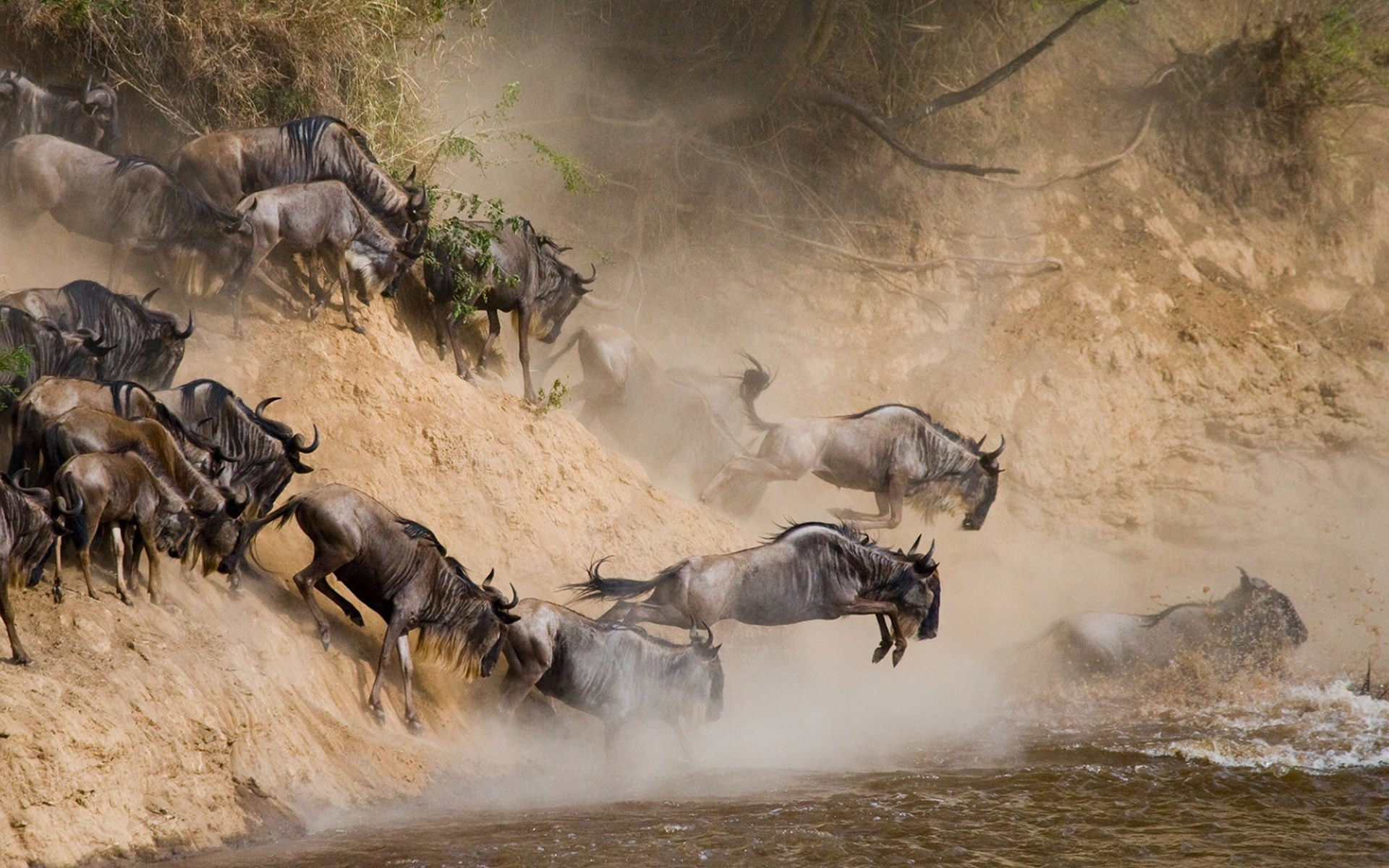Spanning 12,000 square miles with a sheer diversity not only in wildlife but also in terrain, Serengeti National Park remains to be one of the most astounding safari parks in the world. It hosts the largest animal migration in the world and is a famed provider of spine-tingling African safaris. Because the park is so vast, it can be overwhelming especially for first-time travelers. Hence, it has been divided into 4 regions, each defined by their dominant features and biomes: Central (Seronera), Western Corridor, Northern, and Southern.
History of the Serengeti
For centuries, the vast Serengeti plains have been used for grazing livestock by the Maasai people. They named the area “Serengeti” which comes from the Maasai word “Serengit” meaning endless plains. Despite being so fertile and abundant in wildlife, the area remained little known to many until German geographer and explorer Dr. Oscar Baumann entered the area in 1892. In 1913, Stewart Edward White, the first Brit to ever step foot on the Serengeti, also explored the land in the northern region and recorded his explorations.
As the Serengeti plains became known to political interests by 1913, professional hunters became drawn to the area, mainly hunting lions and threatening the extinction of lions in the Serengeti as years went by. To protect the lion population, the British decided to make a partial game reserve of 800 acres (3.2 square km) in the area in 1921 and a full one in 1929. The Maasai people were also moved the Ngorongoro highlands to further preserve wildlife. In 1951, Serengeti National Park was established and in 1981, it was added to the UNESCO World Heritage Sites. To this very day, Serengeti remains to be the only place in Africa where vast land-animal migrations still take place.
Central (Seronera)
Central Serengeti is fondly called Seronera. It is the heart of the Serengeti and is home to a varied landscape composed of endless savannas dotted with acacia and baobab trees, riverine areas, and valleys and kopjes and watering holes, too. The Seronera River also has one of the highest densities of leopards on the planet.
Magnificent and wildlife-filled all year-round, Seronera is home to a myriad of accommodation facilities that range from camping sites to tented camps to lodges. In fact, this is the area in Serengeti with the most number of permanent camps. It is also the setting for most safari activities including the postcard-perfect hot air balloon safaris.
Airstrip/s found in this area: Seronera airstrip
How to get there: From Arusha, you can take a charter flight to Seronera airstrip. It will be about 1-2 hours flight. Flights to Seronera airstrip are also available from Zanzibar, Mwanza and Dar es Salaam as well as other airstrips in the park. Alternatively, you can take the road which is a 5- to 7-hour drive from Arusha.
Best time to go: Wildlife viewing is excellent any time of the year as many animals reside in this area, but migratory herds are usually seen around this area during wet season which is between April and May. June to October is also excellent as some of the herds linger in this area for a longer time, and many predator actions can unfold.
Famous for: Great game sightings virtually guaranteed all year, the exhilarating balloon safaris, the high chances of seeing the Big Five, and the huge diversity of resident wildlife. Also famous for the lions, leopards and cheetahs.
Western Corridor
Moving to the west, you will find a 50-kilometer wide strip of land along the course of the Grumeti River, which is the focal point of the region. Mostly made up of valleys and alluvial plains, and surrounded with hills on either side, the Western Corridor is deemed the starting point of the dramatic river crossings during Wildebeest Migration.
By the end of May, migratory hooves congregate around the Western Corridor as they prepare for their first feat which is to cross the crocodile-infested Grumeti River. Other animal sightings in this area include elephants, giraffes, buffalos, leopards, elands, impalas, topi antelopes, hartebeests, waterbucks, Thomson gazelles and even big cats and hyenas.
Airstrip/s found in this area: Grumeti, Fort Ikoma, and Sasakwa
How to get there: Charter a plane from Arusha, Dar es Salaam, Zanzibar or other airstrips in the park to either Grumeti airstrip, Fort Ikoma airstrip or Sasakwa airstrip. You can also drive through Arusha-Musomo road for 6 to 7 hours to get to this area. Closest airstrip to the tracks of the Great Migration is Grumeti airstrip.
Best time to go: June and July
Famous for: Grumeti river crossing, large herds of elephants and giraffes, and the population of rare colobus monkeys as well as massive Nile crocodiles.
Northern Serengeti
Northern Serengeti is known to be the quieter and more unexplored area of the park. It is the area with the most number of cheetahs as these elusive felines love to run around secluded, endless plains. It is also well-known for big cat viewing especially in the Lobo area. The area is composed of a fascinating terrain made of woodlands, hills and some beautiful kopjes, but the most captivating highlight of all is the Mara River.
Between July and October after the migratory animals brave the Grumeti River, they face their biggest challenge of the migration: the Mara River crossing. This event has been deemed “The World Cup of Wildlife” and the “greatest show on earth” due to its intensity, drama and astounding bewilderment. While some herds remain in the northern plains, about 2 million hooves muster all their remaining strength and courage to cross to the other side for fresh grazing and water. Since the Mara River is deep, strong and infested by large Nile crocodiles and territorial hippos, many hooves struggle for their survival as they fight not only against predation but also against hunger and exhaustion. On the other side, which is the Masai Mara in Kenya, are hungry predators waiting to welcome them with an action-packed greeting. Indeed, this massive animal activity is a sight to behold. Something out of the ordinary. Something that cannot be found elsewhere in the world.
Airstrip/s found in this area: Lobo, Kogatende/Lamai
How to get there: There are plenty of flights available to Lobo and Kogatende airstrips. If you want to take the road and have much time to spare, you can drive from Arusha which will take you about 7 to 8 hours to get to the northern region.
Best time to go: August to October
Famous for: The iconic Wildebeest Migration river crossing, rare oribi antelope and black rhino, and big cat viewing especially cheetahs in Lobo valley
Southern Serengeti
Southern Serengeti is a popular destination for many travelers most especially because it is very near the other UNESCO site of Tanzania which is Ngorongoro Conservation Area. The region is made of a picturesque topography — short grass plains which is perfect for game viewing any time of the year, granite kopjes, small hills, lakes, valleys and depressions. It is home to the Wildebeest Migration during Green Season which is from December to April, as the millions of wildebeests give birth to their young. According to reports, 8,000 baby wildebeests are being born each day during calving season (January to March). As expected, a slew of predators takes advantage of this opportunity as feeble youngsters abound. In fact, many lion cubs are even trained to hunt during this time.
Visitors that are able to witness this glorious event are rewarded with unforgettable memories like seeing a baby wildebeest run for its life the moment it comes out of its mother’s womb. Other species commonly sighted in the area are lions, leopards, elands, cheetahs, giraffes, elephants, hyenas, caracals and jackals.
Airstrip/s found in this area: Ndutu, Serengeti South
How to get there: Southern Serengeti is only a 5- to 6- hour drive from Arusha, and a 2-hour drive from Central Seronera. Flights are also available from Arusha, Mwanza, Dar es Salaam, Zanzibar and other aristrips in the park.
Best time to go: December to March
Famous for: Wildebeest calving season, predator-prey interaction including lion cubs being trained to hunt, photographic landscapes, and close proximity to Ngorongoro Conservation Area
Understanding each region of the Serengeti helps you plan your Serengeti safari more efficiently and at the same time understand why your guide is taking you where. What makes the Serengeti a splendid destination for a safari is that all year-round, it is filled with active wildlife and adventures and there certainly is nowhere else in the world like the Serengeti.

